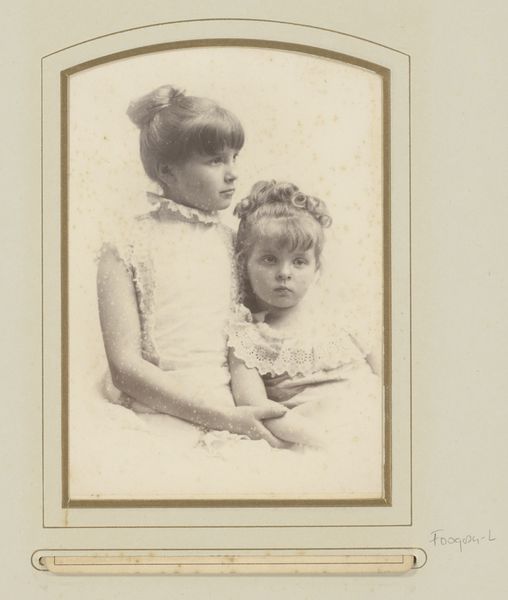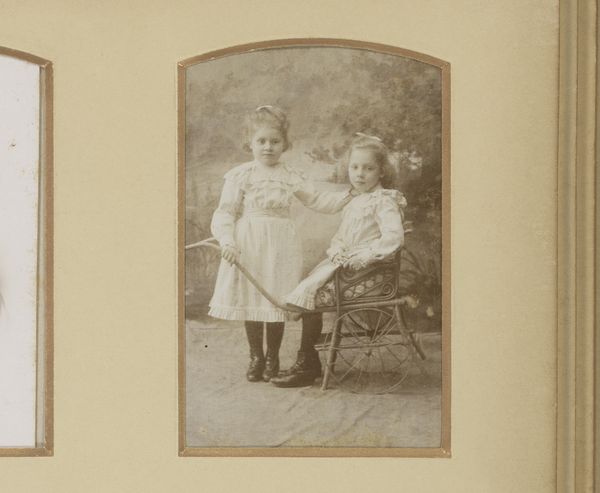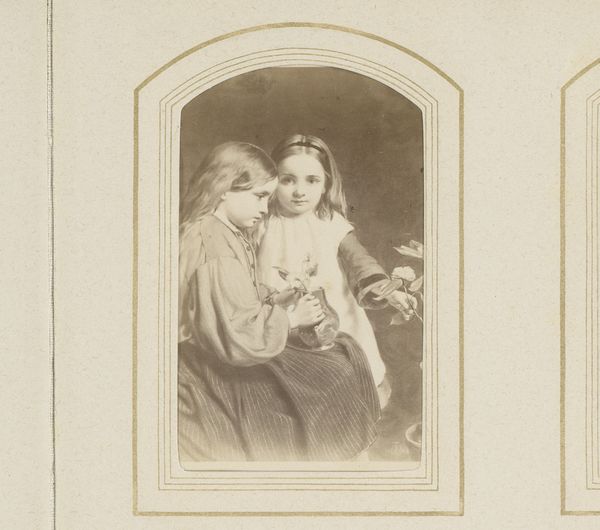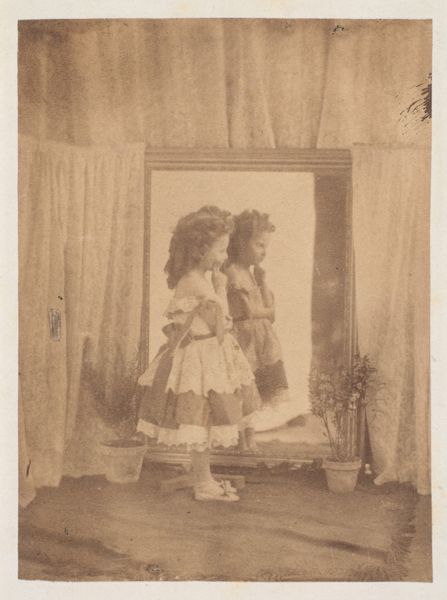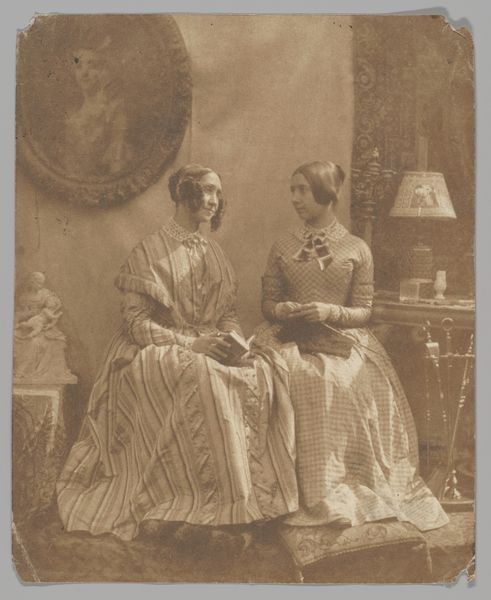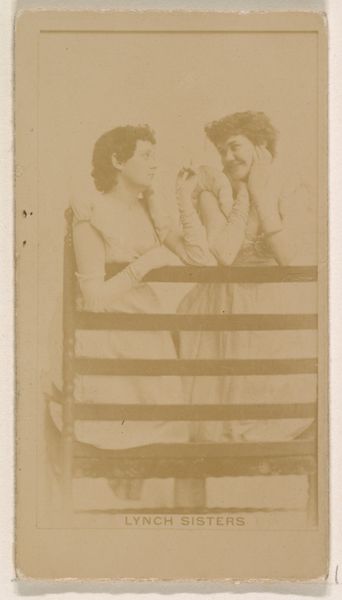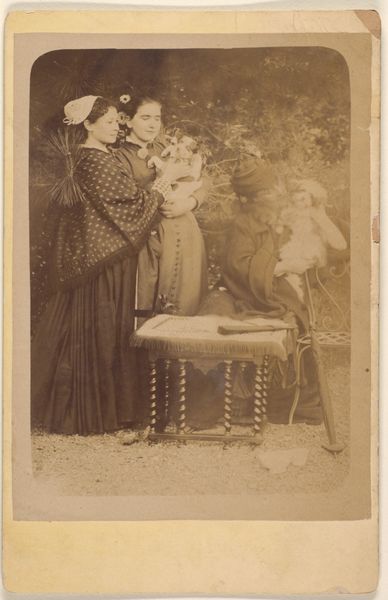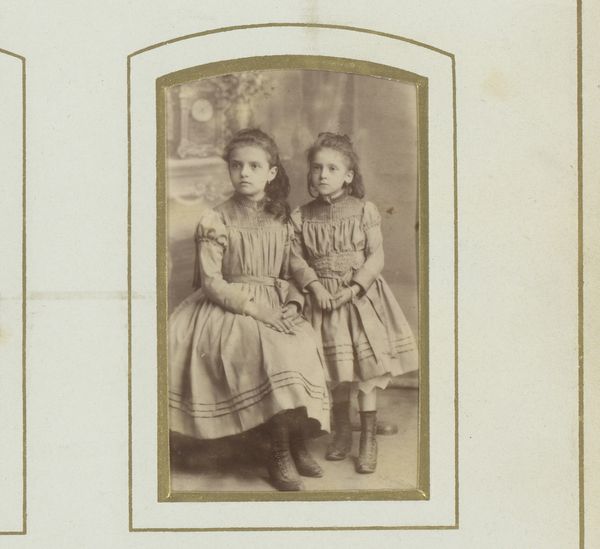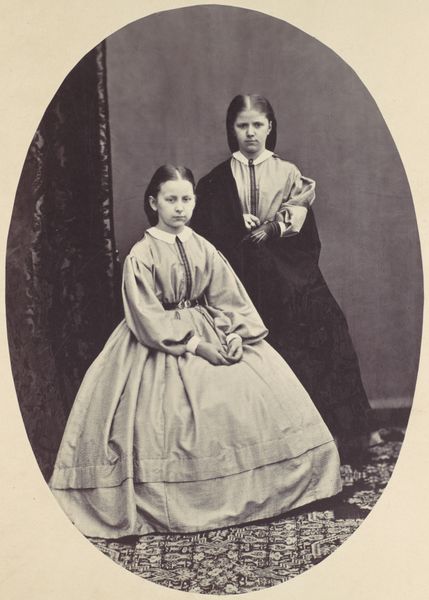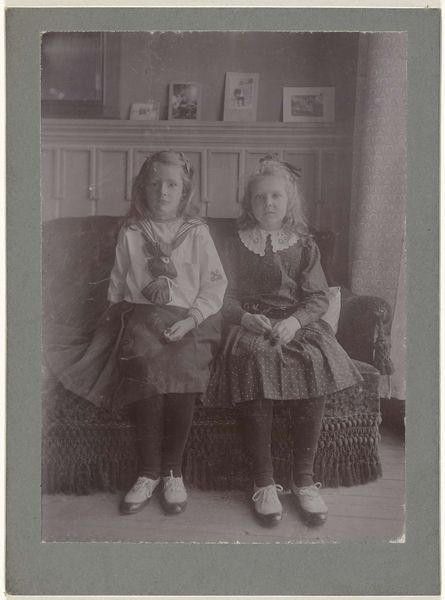
Frances and Ethel de Forest, daughters of Robert de Forest 1888 - 1892
0:00
0:00
photography, ink
#
portrait
#
16_19th-century
#
girl
#
archive photography
#
photography
#
ink
#
19th century
#
genre-painting
#
realism
Dimensions: 19.2 x 23.7 cm (7 9/16 x 9 5/16 in. )
Copyright: Public Domain
Editor: Here we have a lovely photographic portrait titled "Frances and Ethel de Forest, daughters of Robert de Forest," created between 1888 and 1892 by George Collins Cox. There's a sweetness to the image; the girls seem captured in a moment of private play. What stands out to you about this piece? Curator: It's more than just a sweet portrait; it's a window into the carefully constructed world of childhood in the late 19th century. Notice how the studio setting, the children's dresses, and even the tea set contribute to a narrative of gentility and domesticity. It speaks to the evolving role of children and the sentimentalization of childhood that gained momentum during this period. Consider the De Forest family’s social standing; how might their position have influenced this portrayal? Editor: So it's a curated performance, in a way? More about conveying a specific social image than capturing a candid moment? Curator: Precisely! Photography at the time was less about snapshots and more about carefully orchestrated representations. The image functions almost like a calling card, presenting the family – and specifically these young daughters – in a favorable light, aligning them with certain values and aspirations within their social circle. The realism that defines the picture serves as validation and gives authenticity to this staged, private moment. What else strikes you as deliberately chosen in the photograph? Editor: The fur rug feels a bit…extra. And maybe highlights the family's wealth. I hadn't considered how much is communicated by a seemingly simple image. Curator: Indeed. The rug, the matching ribbons in their hair—these details weren't accidental. They are markers of status and taste. We see the deliberate construction of an identity. Consider the public role such images played in shaping perceptions of family and class in this era. Editor: It's fascinating to consider all these layers of social meaning embedded in what initially seemed like a simple photograph. I'll never look at a portrait the same way! Curator: That’s the power of art history! It teaches us to see beyond the surface and understand the complex interplay of culture, society, and individual expression that shapes our visual world.
Comments
No comments
Be the first to comment and join the conversation on the ultimate creative platform.

